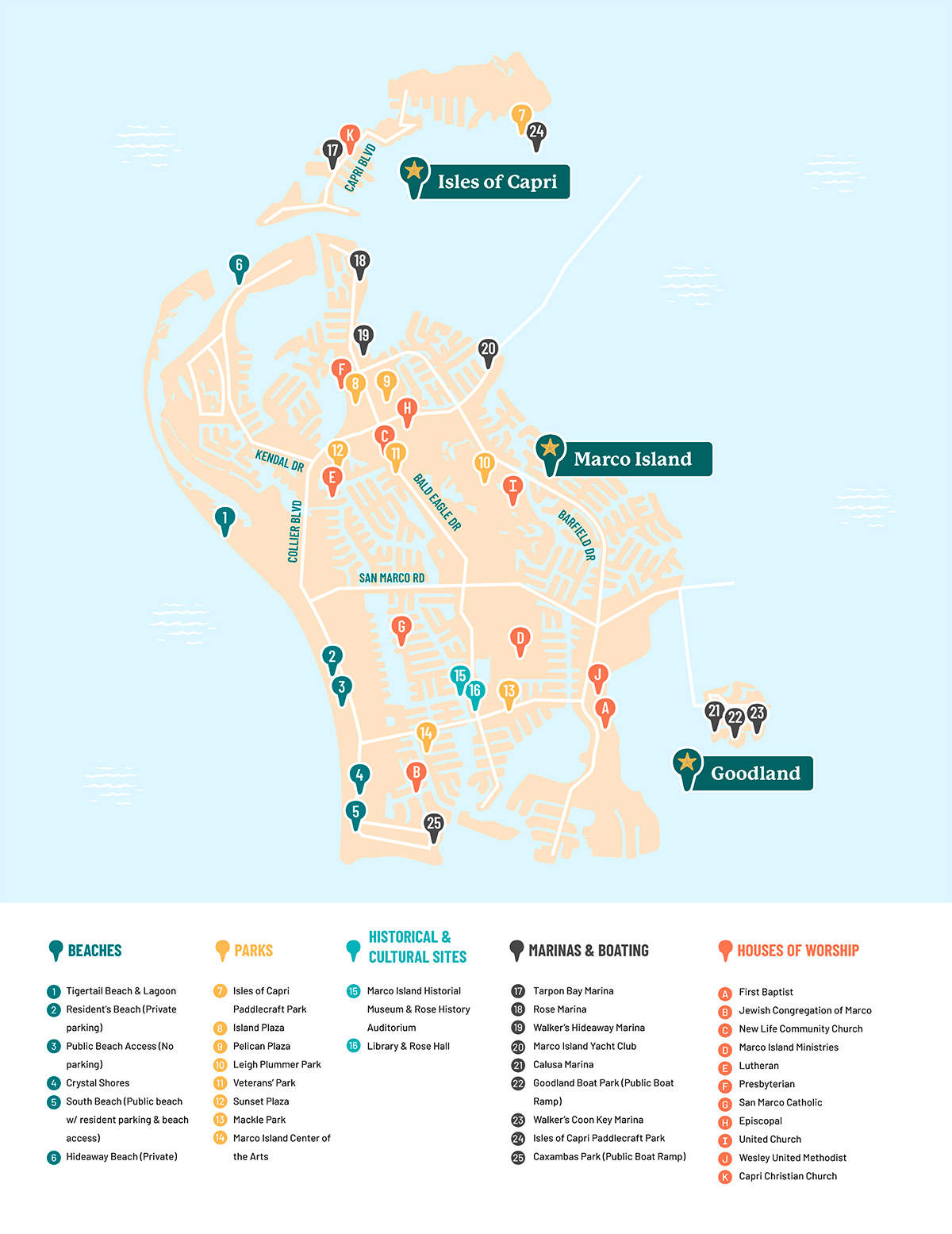Know
Before You Go

Know
Before You Go

Planning a trip to Marco Island? Whether you're visiting for the first time or are a longtime resident, our Local Info guide connects you to the resources you need to enjoy paradise with ease. From emergency services and transportation options to local government, community organizations, tide times and photo-worthy spots, The Marco Review brings together everything you need to know in one convenient place.
Find contact details for city services, learn about clubs and churches, explore community resources, and get quick answers to common questions. With over 30 years as Marco Island's trusted visitor guide, we make it simple to navigate the island like a local.
Use this page as your go-to reference for reliable information that helps you stay informed, safe, and connected during your time on Marco Island.

Beaches and Shells
Marco Island is home to some of Florida's most beautiful beaches — and some of its best shelling. Get the inside scoop on where to go for calm waters, family-friendly sands, or a morning shell hunt.

Tides and Sunsets
Plan your beach walks, shelling excursions, and golden hour moments with our up-to-date tide charts and sunset times. Click below to find up-to-date tide and sunset information, so you're always in sync with the island's rhythms.

Airports and Transportation
Whether you're flying into Southwest Florida or road-tripping from nearby cities, we've got your transit details covered. Explore airport options, car rental tips, and the best ways to get around Marco once you arrive — including golf carts, bike paths, and scenic drives.

Your Marco Moments
We love seeing Marco through your lens. Browse a curated collection of reader-submitted photos that capture the island's charm — from breathtaking sunsets to wildlife sightings. Want to be featured? Submit your own snapshot!
Marco Island Map

Need-to-Know Before You Go
Whether it's your first visit or your fiftieth, a few quick answers can make your trip smoother. From beach rules to getting around town, we've gathered the most helpful tips travelers ask about Marco Island.


